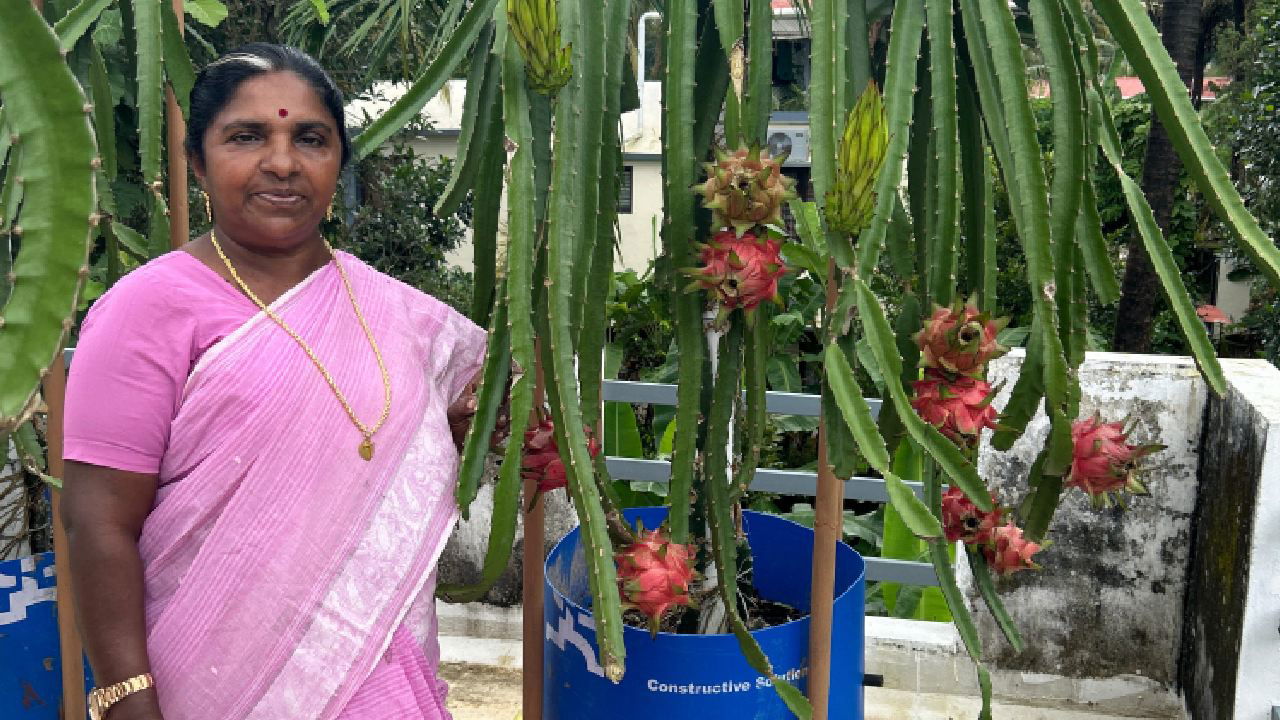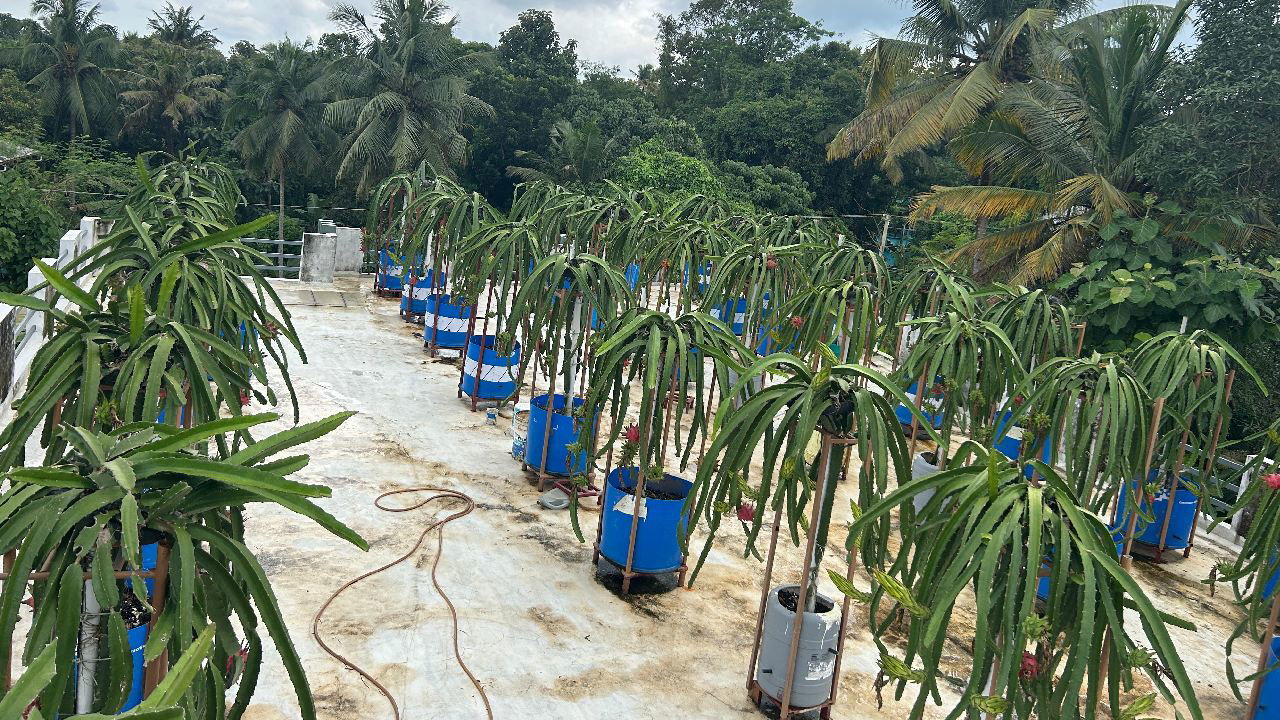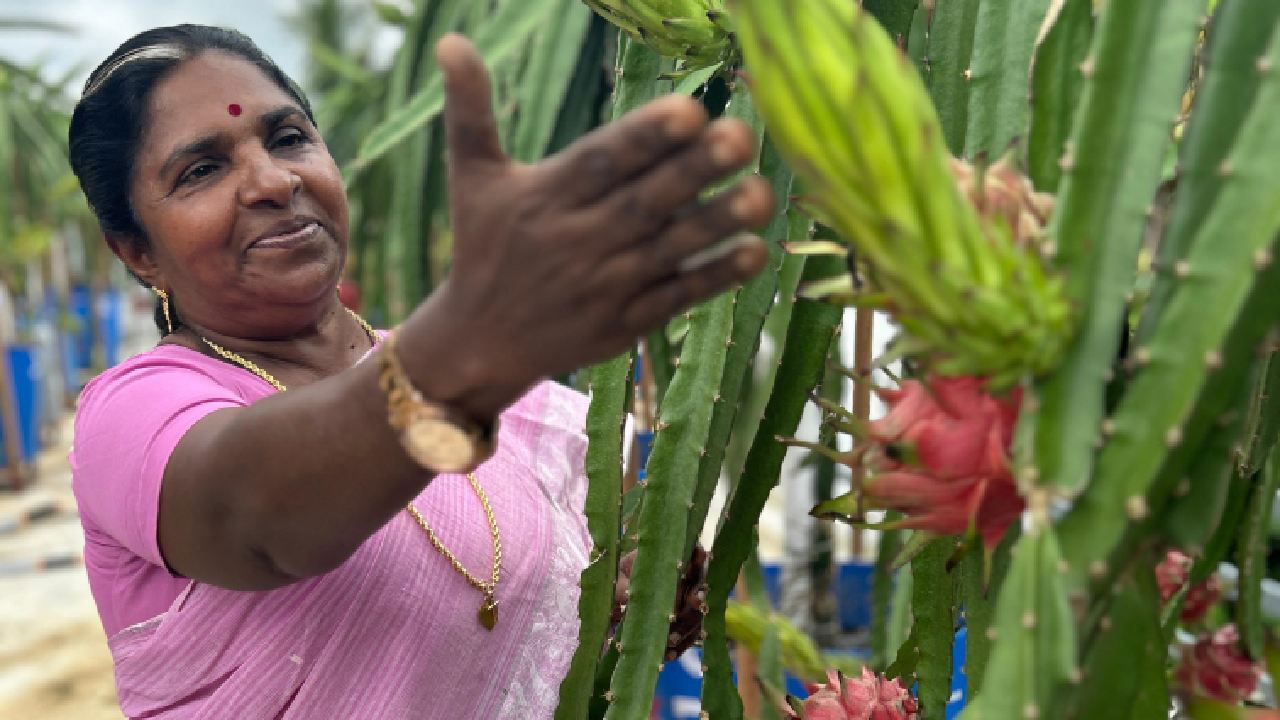
Remabhai S. Sreedharan, hailing from Kollam, Kerala, dedicated 36 years of her life to teaching, eventually rising to the position of headmistress at her school. Upon her retirement in 2022, she faced one of the most challenging moments of her life—the passing of her beloved mother at the age of 95. The loss was profound, as her mother had been a central figure in her life. To cope with her grief and find a new purpose, Remabhai decided to immerse herself in agriculture, a field that had always intrigued her.
Quest for a Unique Crop
With a clear determination to do something meaningful, Remabhai took a step towards the journey of learning. She spent two to three months researching exotic fruits, driven by her belief that Kerala's economy was being negatively impacted by the import of these fruits from other countries. Her goal was to find a crop that could be successfully cultivated locally, reducing dependency on imports. She studied over 40 different exotic fruits, including kiwi, mango, apple, and orange. However, it was the dragon fruit that captivated her the most.
“Dragon fruit is not just a fruit, it’s medicinal,” Remabhai explains. The fruit’s rich health benefits, including its high antioxidant content, beta-carotene for improved eyesight, and vitamin D for strong bones and teeth, made it stand out. What truly convinced her was the realization that, unlike the other fruits she had studied, dragon fruit offered significant medicinal properties. Motivated by this discovery, she decided to dedicate herself to dragon fruit cultivation.
Innovative Cultivation Techniques
Despite her passion, Remabhai faced a significant challenge: she had limited land available for farming. Her house was situated on 9 of the 13 cents of land she owned (1 cent is equals to 0.01 acre), leaving only 4 cents for cultivation. However, this limitation did not deter her. Determined to grow dragon fruit on a large scale, she adopted three innovative cultivation methods: soil-less cultivation, less soil-more plants method, and the traditional method.
On her small plot of 4 cents, Remabhai planted 90 concrete poles, each supporting four dragon fruit plants. Typically, an acre of land would only accommodate around 500 dragon fruit plants, but Remabhai’s method allowed her to cultivate 400 plants on just a fraction of an acre. “This method allows more plants to grow in less soil,” she notes, highlighting the efficiency of her approach.

Breakthrough on the Terrace
When she ran out of space on the ground, Remabhai turned her attention to her terrace. She wanted to expand her dragon fruit cultivation there, but her son objected to the idea of carrying soil onto the terrace. Not one to be easily discouraged, Remabhai decided to experiment with soil-less cultivation. She planted one stem in compost and another in soil, closely monitoring their growth. To her delight, the stem in compost grew faster and healthier.
Encouraged by this success, she purchased 50 chemical barrels from Aluva, Kerala, and used a pulley system to lift them onto her terrace. She filled the barrels with her homemade compost, a blend of green and dry leaves, stem cuttings dust, rice husks, and cow dung or poultry waste. Each barrel housed two dragon fruit seedlings. Six months later, she was rewarded with a bountiful harvest—30 dragon fruits from a single barrel, that is 1500 dragon fruits in total, with each fruit weighing around 600 grams, and some even reaching 810 grams.

Sharing Knowledge and Innovation
Remabhai’s success inspired her to share her knowledge with others. She launched a YouTube channel called "JC’s World," where she documented her farming techniques and innovations. Her channel quickly gained popularity, as people were eager to learn from her experiences. One of her notable innovations is the creation of a "mother culture," a microbial solution that accelerates the decomposition of leaves. She also developed an effective microbial (EM) solution and pioneered a mixed fishamino made from small prawns, crabs, and various fish species, which is rich in over 90 micronutrients.
“People from all over India call me for advice,” she says with pride. Remabhai’s green organic solution, made by soaking green leaves and weeds in water, is another of her innovations. This solution, which she uses as a fertilizer, is rich in nitrogen and was inspired by a technique her father used in his paddy fields.
Thriving Business and Recognized Success
Remabhai’s hard work and innovative methods have paid off handsomely. She now earns approximately Rs. 40,000 from her terrace-grown dragon fruit, and another Rs. 30,000 to Rs. 40,000 from the plants grown on her 4-cent plot. Her one-acre dragon fruit cultivation adds even more to her income, allowing her to earn over Rs. 1.5 lakh per month.
Despite the physical demands of managing her farm, especially since her husband returned to work post-retirement and her son lives away, Remabhai finds immense joy in her work. “The flowers bloom at night, around 9 PM. They bring me so much happiness,” she shares. The sight of the dragon fruit flowers, which bloom under the moonlight, is a source of deep contentment for her.
Her dedication to organic farming has also led to an unusually high yield—Remabhai harvests dragon fruit three times a month, whereas most farmers only get two harvests. “It’s all because of the organic methods I use,” she explains. Typically, dragon fruit season runs from May to November, but Remabhai has managed to extend her harvest into December and even started getting fruits as early as March in 2024.
Expanding Horizons
Beyond dragon fruit, Remabhai is continually experimenting with new crops. She is currently working on cultivating mangoes from Bhutan, Pakistani mulberries, and sapota for her own consumption. She also grows jackfruits in pots, with over 300-400 jackfruit plants thriving in her home-made compost.

Recognition and Awards
In just two years since she took up agriculture, Remabhai has been recognized for her achievements with several prestigious awards. In 2023, she received the Best Organic Farmer Award from the Gram Panchayat, presented by MLA G.S. Jayala. In 2024, she was again honored with the Best Organic Farmer Award by J. Chinchu Rani, Kerala’s Minister of Animal Husbandry, and another award from the Samudra Charitable Trust.
A Message to Fellow Farmers
Remabhai’s message to other farmers is simple yet profound: “Agriculture is not a loss. Select your crops wisely and use organic methods—they are low-cost and environmentally friendly.” Her journey from a grieving retiree to a successful organic farmer is a testament to the power of resilience, innovation, and a deep connection to the land. You can contact her at 93499 37641.
















